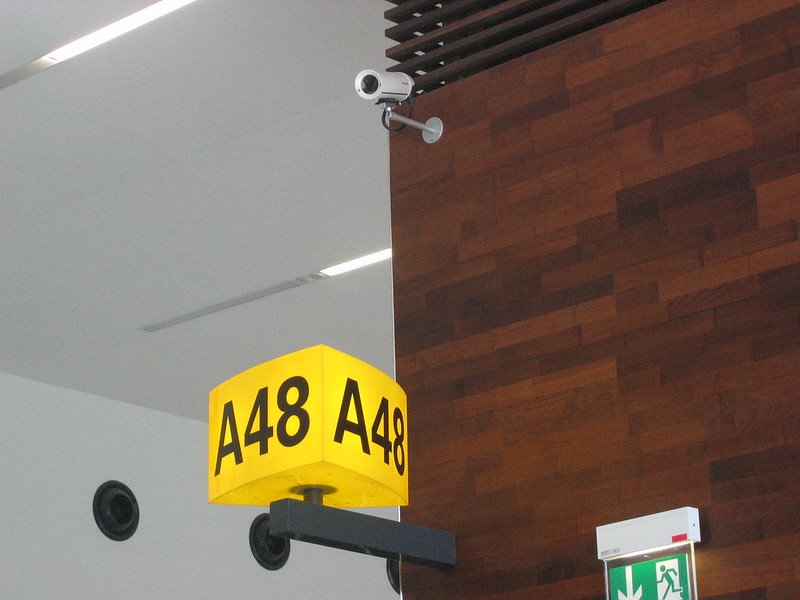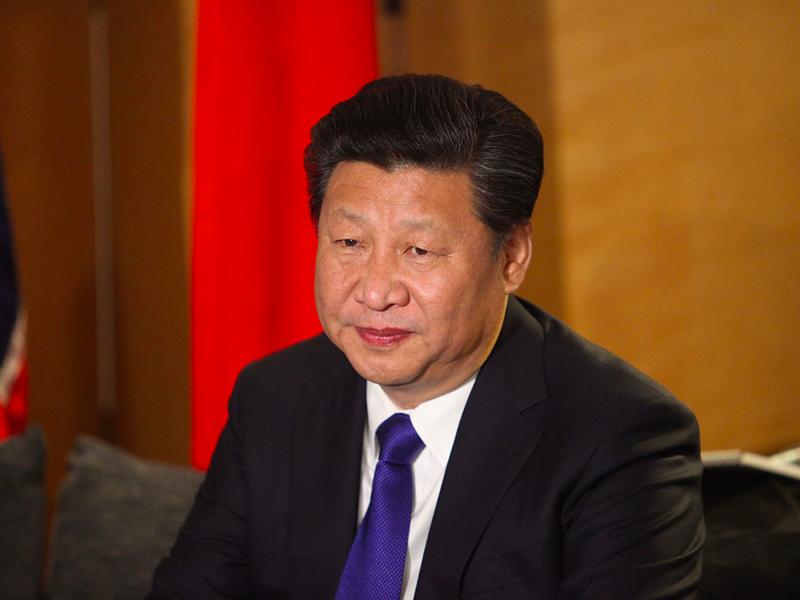Canada’s Expanding Surveillance State
As global security concerns intensify, Canada has significantly expanded its border surveillance infrastructure under the justification of national security. Privacy laws, which are intended to protect individuals from government overreach, have instead been leveraged to enable invasive data collection and monitoring. This paradox is most evident in the way Canadian authorities use legal exemptions to justify the mass collection of sensitive personal data with minimal oversight. As a result, surveillance measures that were once framed as necessary counterterrorism tools have become routine components of border governance, unequally targeting racialized communities.
At the core of this issue is Canada’s Privacy Act, the primary legislation governing how the government collects and utilizes personal information. While the Act is ostensibly designed to uphold the right to privacy, it grants sweeping exemptions that allow agencies such as the Canada Border Services Agency (CBSA) to collect biometric data, track travel histories, and even monitor social media activity. These measures are justified as necessary to combat foreign interference and disinformation, but critics argue that they reinforce systemic discrimination, creating a two-tiered security regime at Canada’s borders. For racialized travelers, the expansion of surveillance does not merely mean increased data collection—it translates into heightened scrutiny, prolonged interrogations, and a disproportionate likelihood of being flagged as security threats.
The normalization of border surveillance reflects a broader trend in Canadian security policy. Over the past two decades, laws governing intelligence-gathering have expanded in scope, allowing for unprecedented levels of data sharing between governmental agencies and international partners. The result is a surveillance infrastructure that extends beyond national borders, embedding itself within transnational security frameworks that prioritize intelligence-sharing over individual privacy rights. Given the racial biases inherent in these systems, this reality impacts non-Western travelers, refugees, and immigrants, reinforcing a racialized security hierarchy.
Privacy Laws: A Cover for Biopolitical Control
A close examination of Canada’s Privacy Act reveals how privacy protections have been diluted under the guise of national security. Section 4 of the Act prohibits the government from collecting personal data unless it directly relates to a specific program or activity. In theory, this provision should limit mass surveillance, ensuring that only relevant data is gathered for legitimate purposes. However, the broad and ambiguous nature of national security justifications allows agencies to circumvent these protections, effectively transforming privacy laws into tools for biopolitical control– where governments categorize, monitor, and regulate individuals through surveillance.
One of the most significant manifestations of this surveillance expansion is the Entry/Exit Initiative, which mandates that passenger data be collected from airlines and border checkpoints. The initiative, framed as a means of tracking visa overstays and enhancing border security, has evolved into a mechanism for broad data collection, unequal affecting racial minorities and immigrants. Similarly, Section 8(2) of the Privacy Act permits authorities to share personal information without consent for security purposes. This provision, intended to facilitate rapid responses to national security threats, has instead created an opaque information-sharing network with minimal oversight. The consequences of these policies are far-reaching. Racialized travelers often find themselves subjected to greater scrutiny at border crossings, not due to any concrete security threat but because of algorithmic assessments that flag them as high-risk individuals. These assessments, driven by predictive analytics and AI, reinforce racial profiling by associating certain ethnic or national backgrounds with potential security threats. The CBSA’s use of risk assessment models further entrenches this bias, as these models frequently rely on historical data that disproportionately reflects racialized individuals due to past discriminatory practices.
Rather than safeguarding civil liberties, privacy laws have become tools for biopolitical regulation, categorizing individuals into risk-based hierarchies that dictate their mobility and access to resources. This dynamic aligns with the broader concept of biopolitical control, where governments use surveillance to monitor, regulate, and discipline populations based on constructed security threats. In Canada, this form of governance manifests through the racialized application of security measures, where marginalized communities bear the brunt of heightened surveillance while white travelers navigate border security with relative ease.
NATO’s Role in Expanding Surveillance
Canada’s approach to border security is increasingly shaped by NATO’s strategic priorities, particularly its focus on countering mis-, dis-, and malinformation (MDM). NATO 2030 Agenda emphasizes digital security and intelligence-sharing, urging member states to adopt enhanced monitoring tools to combat foreign interference. As a NATO ally, Canada has aligned its national security policies with these priorities, incorporating AI-driven surveillance measures aimed at detecting disinformation and potential security threats. However, these measures frequently blur the distinction between legitimate security concerns and civil liberties.
The framing of MDM as a national security threat has provided Canadian authorities with a rationale to expand surveillance under the pretense of protecting democratic institutions. The problem lies in the inherent bias of these systems: risk assessment models are built on data sets that reflect historical patterns of racial profiling, reinforcing discriminatory outcomes. Travelers from Arab countries, for instance, are more likely to face additional screening, not because of any substantiated security concerns, but because the algorithms used to assess risk levels are trained on flawed data.
The increasing integration of NATO-driven digital security measures into Canadian border policy raises pressing questions about accountability and oversight. The absence of independent audits on how these tools operate means that racial biases embedded in AI-driven surveillance systems go largely unchallenged. Furthermore, there is little transparency regarding how these systems classify individuals as security threats, leaving affected travelers with no clear avenue for recourse. As a result, the expansion of surveillance under the guise of countering MDM has perpetuated a security apparatus that disproportionately targets racialized populations while failing to address the root causes of misinformation and foreign interference.
AI, Predictive Analytics, and the Future of Border Security
The growing reliance on AI and predictive analytics in border governance underscores the dangers of unchecked surveillance expansion. One particularly concerning development is the increasing use of social media monitoring at border checkpoints. Whereas intelligence agencies have historically conducted online surveillance in the context of counterterrorism investigations, border officials now have access to tools that allow them to analyze travelers’ digital footprints in real-time. This development raises fundamental concerns about free expression and privacy rights, as individuals may be flagged for past social media activity rather than any tangible security risk.
Facial recognition technology and behavioral analytics further complicate this landscape. While these systems are marketed as objective and impartial, numerous studies have shown that they unequally misidentify racial minorities. The consequences of these misidentifications can be severe, leading to wrongful detentions, travel restrictions, and unwarranted security screenings. Despite these risks, Canadian authorities have yet to implement robust oversight mechanisms to ensure that these technologies operate fairly and transparently. The lack of independent audits or public appeals processes exacerbates concerns about the unchecked power of surveillance agencies. Travelers flagged by AI-driven risk assessment models have no means of challenging their classification, reinforcing a system where racialized individuals are subjected to heightened scrutiny without accountability. Without substantial legal reforms, Canada risks normalizing a surveillance state where privacy laws serve as a veneer for expansive monitoring rather than as genuine safeguards for civil liberties.
The expansion of AI-driven surveillance in Canada reflects a broader global trend, where national security imperatives are increasingly used to justify the erosion of privacy rights. If left unchallenged, these developments could further entrench racialized surveillance, disproportionately targeting marginalized communities under the pretext of national security. To address these concerns, policymakers must implement greater oversight, transparency, and legal accountability, ensuring that privacy laws serve their intended purpose rather than functioning as enablers of systemic discrimination.
To mitigate these concerns, the Canadian government must introduce stronger oversight mechanisms and clearer legal safeguards against the misuse of surveillance tools. Independent audits of AI-driven security systems should be mandated to ensure transparency and prevent racial bias in risk assessments. Additionally, the Privacy Act and related national security provisions should be revisited to narrow exemptions that enable mass data collection. Engaging civil society organizations and privacy advocates in policy making would help balance national security needs with human rights protections. Finally, Canada should push for greater accountability within NATO’s intelligence-sharing frameworks, ensuring that counter-MDM initiatives do not disproportionately target marginalized communities. These measures aim to help Canada uphold its commitments to both security and civil liberties in an increasingly digital world.
Any views or opinions expressed in articles are solely those of the authors and do not necessarily represent the views of the NATO Association of Canada.
Airport waiting room surveillance (2005) via Flickr. Licensed under CC BY 2.0.





